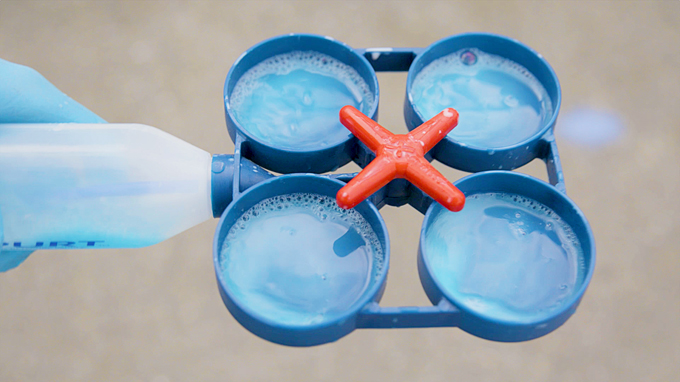PREVENT MASTITIS OVER CALVING > FACT-SHEET
TO PREVENT MASTITIS IN THE SPRINGERS AND COLOSTRUMS:
- Shift springers often to keep a clean break
- Don’t graze springers on effluent paddocks
- Milk springers which are already leaking milk — mark these so you feed their calf colostrum from another cow
- Teat spray springers every time they come through the shed
TO PREVENT MASTITIS IN THE MILKING MOB, AND ENSURE HIGH-QUALITY MILK FOR SUPPLY:
- Strip the colostrum cows at every milking and check for clots, flakes or watery milk
- Mark, Record, Separate, then Treat (MRS. T) any cows with clinical mastitis
- Keep cows with blood in their milk in the colostrum mob until it resolves
- Only draft RMT negative colostrums with normal looking milk into the milkers. If a cow has a positive RMT at her eighth milking in the colostrum mob, keep her in the colostrums and continue to check her at each milking. If she continues to test RMT positive for several milkings (especially in a single quarter) this is probably subclinical mastitis. Talk with your vet about what to do next.

TO PREVENT MASTITIS IN ALL GROUPS OF COWS:
- Only cup-up clean, dry teats. Use a dry paper towel to wipe teats that are wet or dirty
- Teat spray all cows after every milking — this is the most important step you can take to prevent mastitis
- Give all cows immediate access to feed after milking so they stay standing while their teat ends close
Monitor your mastitis case records. If you have:
- >8 clinical cases / 100 mixed-age cows over calving or
- >16 clinical cases / 100 heifers over calving
Seek help from your vet or milk quality consultant.
REFERENCES
- DairyNZ SmartSAMM. (2012). Calving Technote 4: Rapidly find, record and treat clinical mastitis in recently calved cows. www.dairynz.co.nz
- DairyNZ SmartSAMM. (2012). Lactation Technote 10: Rapidly find, record and treat clinical cases. www.dairynz.co.nz
- DairyNZ SmartSAMM. (2012). Lactation Guideline 7: Use post-milking teat disinfection on every teat after every milking. www.dairynz.co.nz
- DairyNZ SmartSAMM. (2012). Calving Technote 1: Reduce exposure to environmental mastitis bacteria. www.dairynz.co.nz
- DairyNZ SmartSAMM. (2013). Calving Guideline 3: Check that milk is suitable to go into the vat. www.dairynz.co.nz
- DairyNZ SmartSAMM. (2020). Drying Off Technote 14: Decide dry cow management strategy. www.dairynz.co.nz
FOR MORE:
Or find us on YouTube by searching: TopFarmersNZ
Or visit: msd-animal-health.co.nz

Top Farmers Know-How provides a reference library of industry best practice in some key animal health management areas including mastitis, dry off, calf health, BVD, salmonella and campylobacter. We know that farmers and vets are busy people, so we’ve created resources in different formats and in bite-sized chunks to make it more flexible and accessible.

